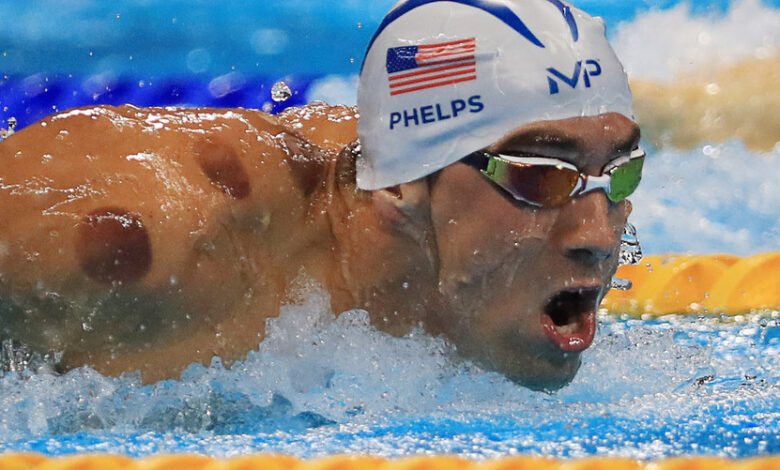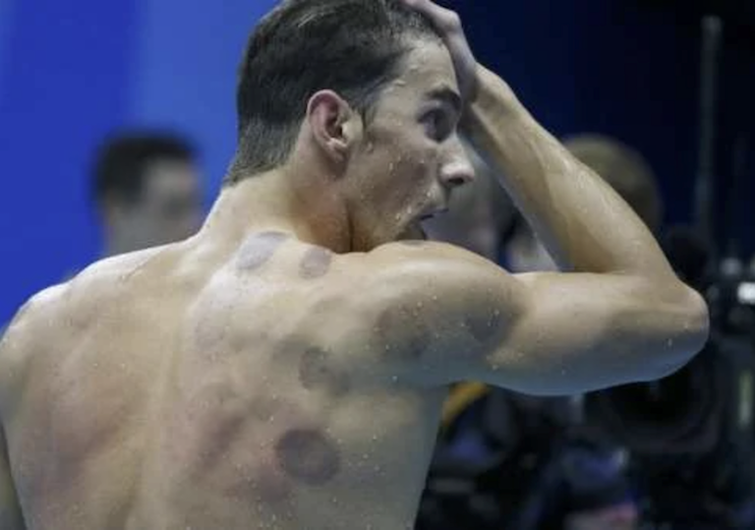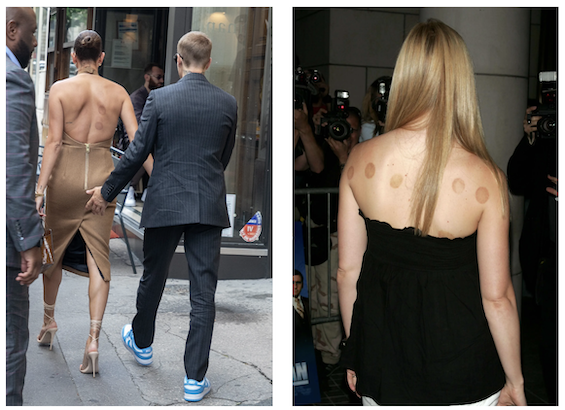Explainer: Cupping Therapy & How the Olympics Spread the Word

The Explainer is where we explain an aspect of Chinese life. Simple. So now you know.
Many foreigners remember the curiosity they felt the first time they saw a Chinese person walk by with large bruise-like circles adorning their body, looking as if they just lost a boxing match with an angry tennis ball. The mystery is solved when they learn about cupping therapy (báguàn 拔罐) – an ancient practice that still lacks the widespread attention or awareness that other techniques such as acupuncture have garnered.
Despite its use by celebrities and famous athletes for years, the unusually high percentage of swimmers at this year’s Olympics sporting the signature purple circles has created a worldwide buzz about cupping therapy and its benefits.
The popularity of cupping amongst swimmers is no doubt largely the result of retired champion Michael Phelps – the most decorated Olympian of all time with 28 swimming event medals – and his obsession with the treatment.

Phelps with cupping marks [Image via SCMP]
Phelps’s longtime strength-and-conditioning coach introduced him to cupping in 2014, and he still swears by the practice; he received the treatment at least twice a week and always made sure to do it before a race.
Phelps got used to having to explain the strange markings to Westerners but following their prevalence at the Paris Olympics – they covered the backs of notable swimmers such as Caeleb Dressel (USA), Kyle Chalmers (Australia), and Sarah Sjöström (Sweden) – media outlets around the world – even including Vogue – recently published articles about cupping.
However, this isn’t the first time cupping has attracted notice in the West. Hollywood actress and Goop founder Gwyneth Paltrow showed up to a film premier in New York City covered in cupping marks back in 2006. Her role as a lifestyle and wellness guru resulted in other A-listers including Jennifer Aniston and Hailey Bieber following suit.

Haily Bieber (L) and Gwyneth Paltrow (L) sporting spots
So, what exactly is cupping therapy?
People who have known about and even tried cupping have likely often heard it dismissed as pseudoscience or only have a vague idea of the theories behind the practice.
Cupping therapy, also known as myofascial decompression, is a traditional medicine practice that dates back to as early as 1550 B.C. when it was used in Ancient Egypt to treat a variety of ailments such as fever and pain. The Egyptians then introduced it to the ancient Greeks, and it is also seen in Islamic cultures.
Cupping even spread to many European countries during the Renaissance; particularly in Italy, where it was used as a popular treatment for arthritis and gout. Throughout the 18th century, the majority of European doctors used it to treat the common cold and chest infections, but the practice’s popularity declined by the end of the century as new medical techniques were developed – perhaps cupping is about to make its European comeback.
In traditional Chinese medicine, cupping is attributed to Ge Hong – a prominent herbalist and alchemist from the Jin dynasty, but in every culture the purpose remains the same: to strengthen or activate the body’s natural self-healing powers
 Image via AcuPro
Image via AcuPro
Everything from bamboo to bronze cups have been used for the treatment, which is typically categorized into two types – wet cupping and dry cupping. In both techniques, containers are used to create a vacuum over an area of skin. However, wet cupping involves piercing the skin to allow the suction to draw out small quantities of blood and extracellular fluid from the body.
Traditional methods utilize a flame to burn the oxygen within the container – creating a vacuum when it is quickly placed on the skin and left there for between five to 15 minutes. However, there are also modern methods that use suction tubes and other plastic devices – but those aren’t nearly as fun.

Image via Ai
In many ways, cupping is the opposite of getting a massage, which involves placing positive pressure downwards on the muscles and fascia (the connective tissue that wraps everything inside you and attaches it to your bones) in order to stretch them and stimulate circulation. In cupping, the tissue is instead getting stretched by being lifted upwards through suction.
The ‘bruises’ that appear on the skin are the result of tiny blood vessels (capillaries) breaking or leaking. When your body is even mildly injured it responds with increased circulation to the affected area and activates its immune system – so a little bit of bad can do you a lot of good.
Athletes use cupping to draw out lactic acid and increase blood flow to their muscles. Darker spots are said to indicate overworked or tight areas of fluid stagnation in the body. Swimmers have testified that it minimizes fascial restriction so that their motions are smoother.

Image via Ai
You can find cupping at most massage joints or traditional medicine practices in China and a treatment doesn’t usually cost more than RMB100. Newbie tip: you are not supposed to shower until the next day because your skin will be sensitive! There is a bit of an uncomfortable pinch at the very beginning, but then you might even fall asleep lying on the massage table waiting for the cups to be removed.
Although the effectiveness of the treatment is still widely debated amongst modern medical practitioners – as is every other treatment that pharmaceutical companies don’t massively profit off of – cupping therapy is a practice that has stood the test of time and thanks to the Paris Olympics swimmers, it could possibly be making a global comeback as the newest health and fitness trend.
For the latest China news stories, follow our official WeChat account, ThatsBeijing.
[Cover image via Ai]



